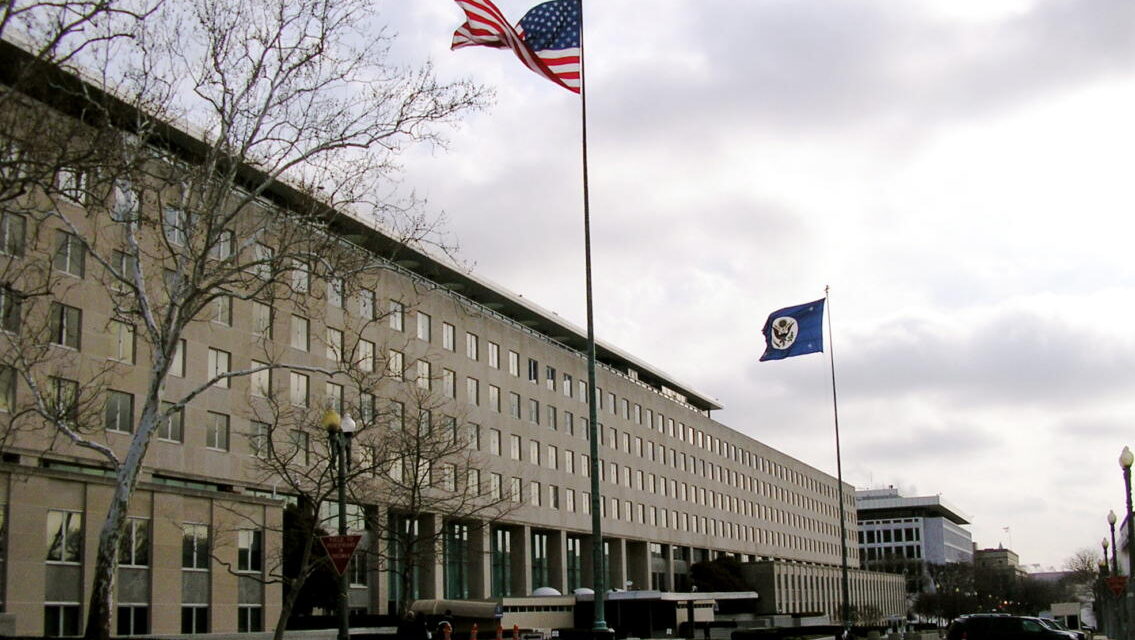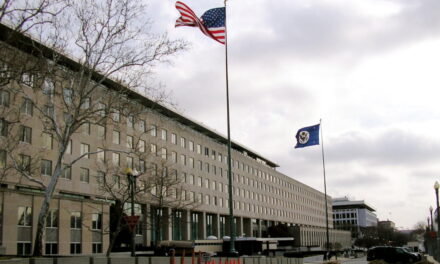Back in October, Trump’s digital director Brad Parscale made an appearance on 60 Minutes where he gave his version of the events that led up to Trump’s shocking election night victory. In this first excerpt, he takes responsibility for moving late resources into Wisconsin and Michigan.
LESLEY STAHL: When did you realize he was gonna win?
BRAD PARSCALE: When I really knew?
LESLEY STAHL: Yeah?
BRAD PARSCALE: The Wednesday before. I knew the Republican Party was outperforming anything in history.
BRAD PARSCALE: I started–
LESLEY STAHL: Did they say you were crazy?
BRAD PARSCALE: It was stronger in Michigan. But I was, like, “We can go in and get this,” and I changed all the budgets around.
STUDIO/LESLEY STAHL: He says that he was the one who decided to take resources away from Virginia, which he realized they were losing, and Ohio, they realized they had in the pocket, and put the money and the resources up into Michigan and Wisconsin– which everybody thinks made the difference in the campaign.
BRAD PARSCALE: I took every nickel and dime I could out of anywhere else. And I moved it to Michigan and Wisconsin. And I started buying advertising, digital, TV.
In July, McClatchy reporters Peter Stone and Greg Gordon wrote a piece called Trump-Russia investigators probe Jared Kushner-run digital operation. The article focused on both Mueller’s probe and the various congressional investigations, but only the Congress members were willing to talk on the record. Senator Mark Warner is the ranking member on the Senate Intelligence Committee and probably the most knowledgable Democrat in Congress about facts that have been uncovered but not publicly disclosed. At that time, he had this to say about the Russians’ late advertising campaign:
“I get the fact that the Russian intel services could figure out how to manipulate and use the bots,” Virginia Sen. Mark Warner told Pod Save America recently. “Whether they could know how to target states and levels of voters that the Democrats weren’t even aware (of) really raises some questions … How did they know to go to that level of detail in those kinds of jurisdictions?”
The Russians appear to have targeted women and African-Americans in two of the three decisive states, Wisconsin and Michigan, “where the Democrats were too brain dead to realize those states were even in play,” Warner said.
Twitter’s and Facebook’s search engines in those states were overwhelmed, he said, meaning they couldn’t discern fake news from real news.
“On your news feed, you suddenly got … ‘Hillary Clinton’s sick’ or ‘Hillary Clinton’s stealing money from the State Department,’” said Warner.
According to Parscale, he tried to tell people, including the news networks, that Trump was closing strong and would win, but no one would take him seriously. Even Trump didn’t take him seriously, but he did agree to change his schedule and make late visits to Michigan and Wisconsin.
Now, if look at Brad Parscale’s Wikipedia page, you’ll see that he didn’t have much support in the primaries:
In terms of digital advertising, Parscale utilized Facebook heavily for the campaign advertisements & staffed Facebook employees to help them navigate the Facebook platform to utilize all of the platform’s capabilities. Parscale did not have data scientists or any digital team during the Republican Primary and did much of the social media advertising from his home. He would also stage competitions between tech companies to drive the lowest cost of buying on Facebook (programmatic) as well as other platforms.
If this is true, and I have no real reason to doubt it, Parscale had no data scientists during the primary. On the other hand, Ted Cruz was armed to the teeth with data scientists, including from a firm called Cambridge Analytica.
Cruz has largely built his program out of his Houston headquarters, where a team of statisticians and behavioral psychologists who subscribe to the burgeoning practice of “psychographic targeting” built their own version of a Myers-Briggs personality test. The test data is supplemented by recent issue surveys, and together they are used to categorize supporters, who then receive specially tailored messages, phone calls and visits.
Here are a couple of notable examples of how Cruz’s team was operating in late 2015.
Another emerging tactic that the campaign has employed is “geo-fencing,” a technique that allows people to send messages to digital devices in narrow areas, such as a city block or a single building.
When the Republican Jewish Coalition was meeting at the Venetian in Las Vegas in May, for instance, the Cruz campaign unleashed a series of Web-based advertisements visible only inside the hotel complex that emphasized Cruz’s devotion to Israel and its security.
Cruz has also applied geo-fencing to wooing National Rifle Association members at a recent annual meeting and to similar gatherings elsewhere.
More typical was the utilization of personality and political scores (psychometrics). In September 2016, Alexander Nix, the CEO of Cambridge Analytica, gave a presentation at the Concordia Summit in the Grand Hyatt hotel in Manhattan where he explained that his firm had been “able to form a model to predict the personality of every single adult in the United States of America.”
The strategy that had been used effectively for Cruz was put to use for Trump after he hired Cambridge Analytica in June 2016. Here’s how that looked:
“Pretty much every message that Trump put out was data-driven,” Alexander Nix remembers. On the day of the third presidential debate between Trump and Clinton, Trump’s team tested 175,000 different ad variations for his arguments, in order to find the right versions above all via Facebook. The messages differed for the most part only in microscopic details, in order to target the recipients in the optimal psychological way: different headings, colors, captions, with a photo or video. This fine-tuning reaches all the way down to the smallest groups, Nix explained in an interview with us.
How do you approach a conservative voter? That depends on their psychological profile:
Nix shows how psychographically categorized voters can be differently addressed, based on the example of gun rights, the 2nd Amendment: “For a highly neurotic and conscientious audience the threat of a burglary—and the insurance policy of a gun.” An image on the left shows the hand of an intruder smashing a window. The right side shows a man and a child standing in a field at sunset, both holding guns, clearly shooting ducks: “Conversely, for a closed and agreeable audience. People who care about tradition, and habits, and family.”
And how do you dissuade a potential Clinton voter?
In the Miami district of Little Haiti, for instance, Trump’s campaign provided inhabitants with news about the failure of the Clinton Foundation following the earthquake in Haiti, in order to keep them from voting for Hillary Clinton. This was one of the goals: to keep potential Clinton voters (which include wavering left-wingers, African-Americans, and young women) away from the ballot box, to “suppress” their vote, as one senior campaign official told Bloomberg in the weeks before the election. These “dark posts”—sponsored news-feed-style ads in Facebook timelines that can only be seen by users with specific profiles—included videos aimed at African-Americans in which Hillary Clinton refers to black men as predators, for example.
So, all this was going on in the late stages of the campaign, but you don’t see much evidence of it in Brad Parscale’s retelling on 60 Minutes. More importantly, though, what we now know is that Russians were buying highly targeted Facebook and other social media ads in specific precincts and aimed as specific profiles of voters in Michigan and Wisconsin. Some people have noted that the absolute expenditures were not high, but that’s part of the service Facebook provides. You can save a lot of advertising money by narrowing down your target audience.
So, here’s the point where I revisit my post A #TrumpRussia Confession in Plain Sight. Putin propagandist and notorious Moscow digital pimp Konstantin Rykov claimed in a pair of Facebook posts dated November 12th and November 16th, that he had colluded with Trump and Cambridge Analytica, and that their collusion had been decisive in winning the election.
What was our [i.e., the Russians’] idea with Donald Trump?
For four years and two days .. it was necessary to get to everyone in the brain and grab all possible means of mass perception of reality. Ensure the victory of Donald in the election of the US President. Then create a political alliance between the United States, France, Russia (and a number of other states) and establish a new world order.
Our idea was insane, but realizable.
In order to understand everything for the beginning, it was necessary to “digitize” all possible types of modern man.
Donald decided to invite for this task — the special scientific department of the “Cambridge University.”
British scientists from Cambridge Analytica suggested making 5,000 existing human psychotypes — the “ideal image” of a possible Trump supporter. Then .. put this image back on all psychotypes and thus pick up a universal key to anyone and everyone.
Then it was only necessary to upload this data to information flows and social networks. And we began to look for those who would have coped with this task better than others.
At the very beginning of the brave and romantic [story] was not very much. A pair of hacker groups, civil journalists from WikiLeaks and political strategist Mikhail Kovalev.
The next step was to develop a system for transferring tasks and information, so that no intelligence and NSA could burn it.
Obviously, the timeline there is fuzzy. Cambridge Analytica didn’t work with Trump for four years and two days. They worked with Trump beginning in June 2016, the same month that the Russians came to Trump Tower offering dirt on Hillary Clinton. It was the same month that all of these things happened:
6/3/16 WikiLeaks creates the torrent for the insurance file which includes the DNC hack.
6/3/16 Rob Goldstone contacts Donald Trump Jr. by email, offers assistance from Russian government.
6/7/16 At a speech in Moscow, Carter Page criticized the United States and other Western democracies.
6/7/16 Rob Goldstone reveals that Russian government contact will be Natalia Veselnitskaya
6/7/16 Donald J Trump gives speech in which he promises a major speech about Hillary Clinton’s crimes on June 13th.
6/8/16 First tweet posted to “DCLeaks” Twitter account.
6/9/16 Natalia Veselnitskaya meets with Trump Jr., Manafort, Kushner in Trump Tower
6/12/16 Assange announces he has documents relating to Clinton that would be “enough evidence” to indict her.
6/12/16 According to Guccifer 2.0, the DNC resets their network, kicking “him” out of it.
6/14/16 Washington Post reports that the DNC was hacked by Russians
6/14/16 DNC makes public announcement that it has been hacked
6/15/16 Guccifer 2.0 appears, contacts The Smoking Gun
6/15/16 Crowdstrike releases a detailed statement about Russian hacking of the DNC.
6/15/16 Kevin McCarthy says ““There’s two people I think Putin pays: Rohrabacher and Trump.”
6/15/16 Trump’s team issues a statement claiming the DNC hacked itself
6/16/16 WikiLeaks uploads the torrent containing their insurance file to their website.
6/17/16 The United States expels two Russian diplomats in retaliation for an attack on an American diplomat in Moscow.
6/17/16 WikiLeaks publicly releases their insurance file.
6/19/16 Papadopolous offers to make”off the record” trip to Russia
6/20/16 Date of first Christopher Steele memo in dossier, asserting Kremlin had been helping Trump for at least 5 years.
6/20/16 Guccifer 2.0 first appears on Twitter, restates that the “DNC’s servers hacked by a lone hacker” and releases the DNC’s oppo on Trump.
6/21/16 Guccifer 2.0 interview with Vice News published. Outed as NOT Romanian
6/21/16 Guccifer 2.0 posts documents stolen from the DNC on Clinton’s vulnerabilities as well as potential responses to lines of attack.
6/22/16 WikiLeaks publishes the first in a series of hacked emails taken from the DNC.
6/27/16 First hacked DNC emails posted to “DCLeaks” website.
As I pointed out in the original piece, the facts seem to line up. We now know that Cambridge Analytica sought to work with WikiLeaks in obtaining and releasing illegally hacked emails from Hillary Clinton’s server. In Rykov’s telling, the initial conspiracy also involved “a pair of hacker groups” (presumably Fancy Bear and Cozy Bear). As for developing “a system for transferring tasks and information, so that no intelligence and NSA could burn it,” that could be a reference to the server connecting Alfa Bank to Trump Tower.
It seems to me like the Russians were privy to the same information that Parscale was seeing that allowed him to move resources out of Virginia and Ohio and into Wisconsin and Michigan. And that would make sense if the Russians were working with Trump and Cambridge Analytica all along.
Some people have suggested that Konstantin Rykov is a troll who shouldn’t be believed. But I see no reason why he would have wanted to incriminate Russia four days after Trump’s victory when they had high hopes of getting sanctions relief and other benefits. It appears that he was taking an ill-advised victory lap.




